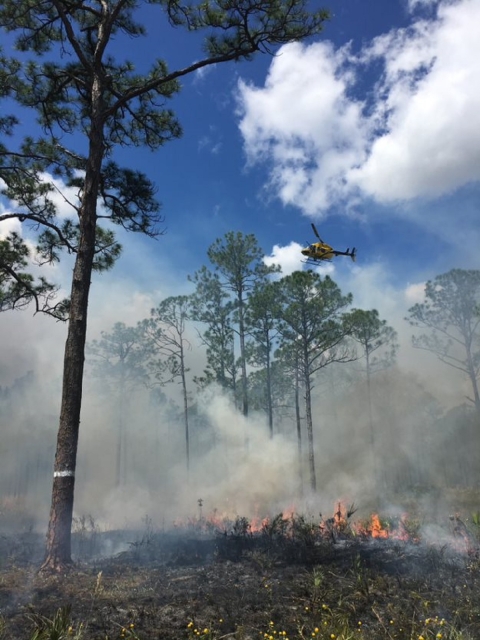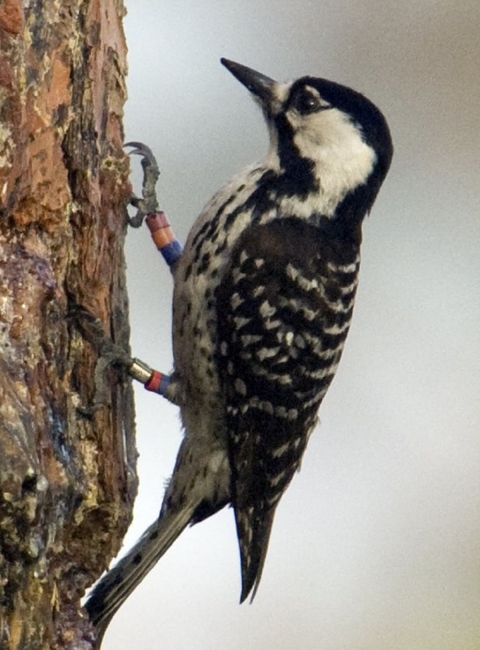What do you get when you combine the land management expertise of a non-profit organization, the perseverance of a state agency, and the financial and technical assistance of the U.S. Fish and Wildlife Service Coastal Program?
At the St. Sebastian River Preserve State Park, you get amazing habitat restoration and species recovery.
The preserve, nestled on the east coast of Florida just north of Vero Beach, consists of 22,000 acres of pine flatwoods interspersed with cypress domes, scrubby flatwoods, and strand swamp. In addition to miles of nature trails, the park is also home to many federally listed species, including the red-cockaded woodpecker.
Beneficial wildfires, historically, had been suppressed on the land leaving the pine flatwoods with a thick, woody understory and only a few types of plants. The key to a healthy ecosystem is a high diversity of native plants. Prescribed fire alone was not going to be enough to restore the beauty of the flatwoods. Mechanically mulching the larger vegetation was needed first, followed by perfectly timed prescribed fires.
Tall Timbers is a non-profit organization with expertise in managing fire-dependent upland habitats. They have also perfected a mechanical mulching technique – roller chopping – which must be applied strategically. It is something of an art form. The state park had the resources to conduct prescribed fire and the Service’s Coastal Program chipped in the money to assist with the restoration effort. The three organizations saw a great opportunity to work together.
Since 2011, the partners have restored nearly 10,000 acres of pine flatwoods. Funds and expertise from each organization has been leveraged to increase on-the-ground management. The beautiful ecosystem provides ideal nesting and foraging habitat for the now-flourishing red-cockaded woodpecker population. Other species, including the brown headed nut hatch, gopher tortoise and eastern indigo snake, have also benefited.
In the end, it is the continuity and dedication of the partners that has been the key to success.






